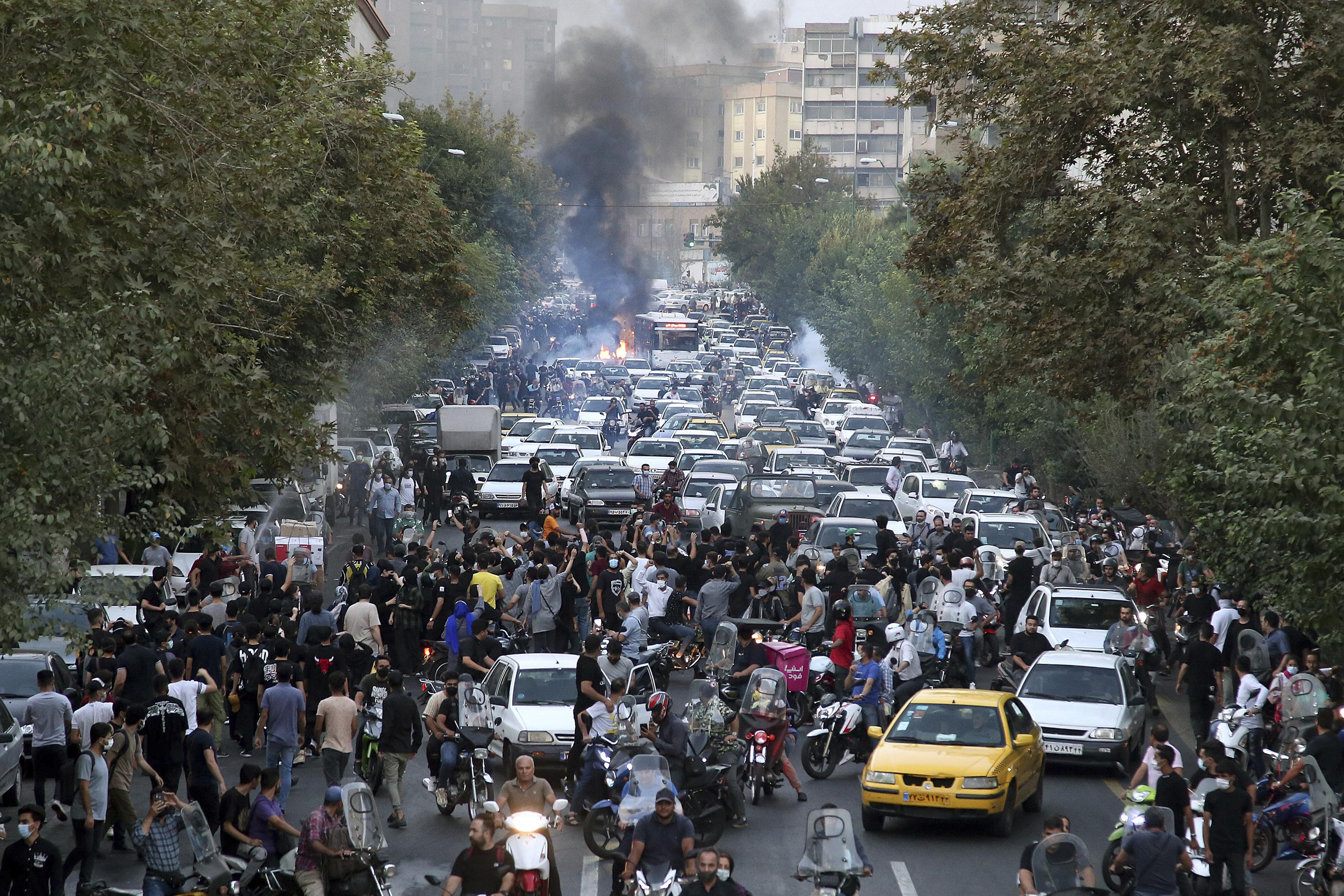
apnews.com
At least 9 killed as Iran protests spread over woman's death
DUBAI, United Arab Emirates (AP) — Clashes between Iranian security forces and protesters angry over the death of a 22-year-old woman in police custody have killed at least nine people since the violence erupted over the weekend, according to a tally Thursday by The Associated Press.
International
DUBAI, United Arab Emirates (AP) — Clashes between Iranian security forces and protesters angry over the death of a 22-year-old woman in police custody have killed at least nine people since the violence erupted over the weekend, according to a tally Thursday by The Associated Press.
The scope of Iran’s ongoing unrest, the worst in several years, still remains unclear as protesters in at least a dozen cities — venting anger over social repression and the country’s mounting crises — continue to encounter security and paramilitary forces.
To prevent protests from spreading, Iran’s biggest telecom operator largely shut down mobile internet access again Thursday, said Netblocks, a group that monitors internet access, describing the restrictions as the most severe since 2019.
An anchor on Iran’s state television suggested the death toll from the mass protests could be as high as 17 on Thursday, but did not say how he reached that figure. “Unfortunately, 17 people and police officers present at the scene of these events lost their lives,” the anchor said, adding official statistics would be released later.
In a country where radio and television stations already are state-controlled and journalists regularly face the threat of arrest, the paramilitary Revolutionary Guard urged the judiciary on Thursday to prosecute “anyone who spreads fake news and rumors” on social media about the unrest. Widespread outages of Instagram and WhatsApp, which are used by protesters, also continued Thursday.
The demonstrations in Iran began as an emotional outpouring over the death of Mahsa Amini, a young woman held by the country’s morality police for allegedly violating its strictly enforced dress code. Her death has sparked sharp condemnation from the United States, the European Union and the United Nations.
The police say she died of a heart attack and was not mistreated, but her family has cast doubt on that account. Independent experts affiliated with the U.N. said Thursday that reports suggested she was severely beaten by the morality police, without offering evidence.
The protests have grown in the last five days into an open challenge to the government, with women removing and burning their state-mandated headscarves in the streets and Iranians calling for the downfall of the Islamic Republic itself.
“Death to the dictator!” has been a common cry in the protests.
Demonstrations have rocked university campuses in Tehran and western cities such as Kermanshah. Although widespread, the unrest appears distinct from earlier rounds of nationwide protests triggered by pocketbook issues.
The protest movement that erupted in 2019 over the government’s gasoline price hike mobilized working class masses in Iran’s towns. Hundreds were killed as security forces cracked down, according to human rights groups, the deadliest violence since the 1979 Islamic Revolution.
Iran’s state-run media this week reported demonstrations in at least 13 cities, including the capital, Tehran. Videos online show security forces firing tear gas and water canons to disperse hundreds of protesters. London-based Amnesty International reported that officers also fired birdshot and beat protesters with batons.
























































